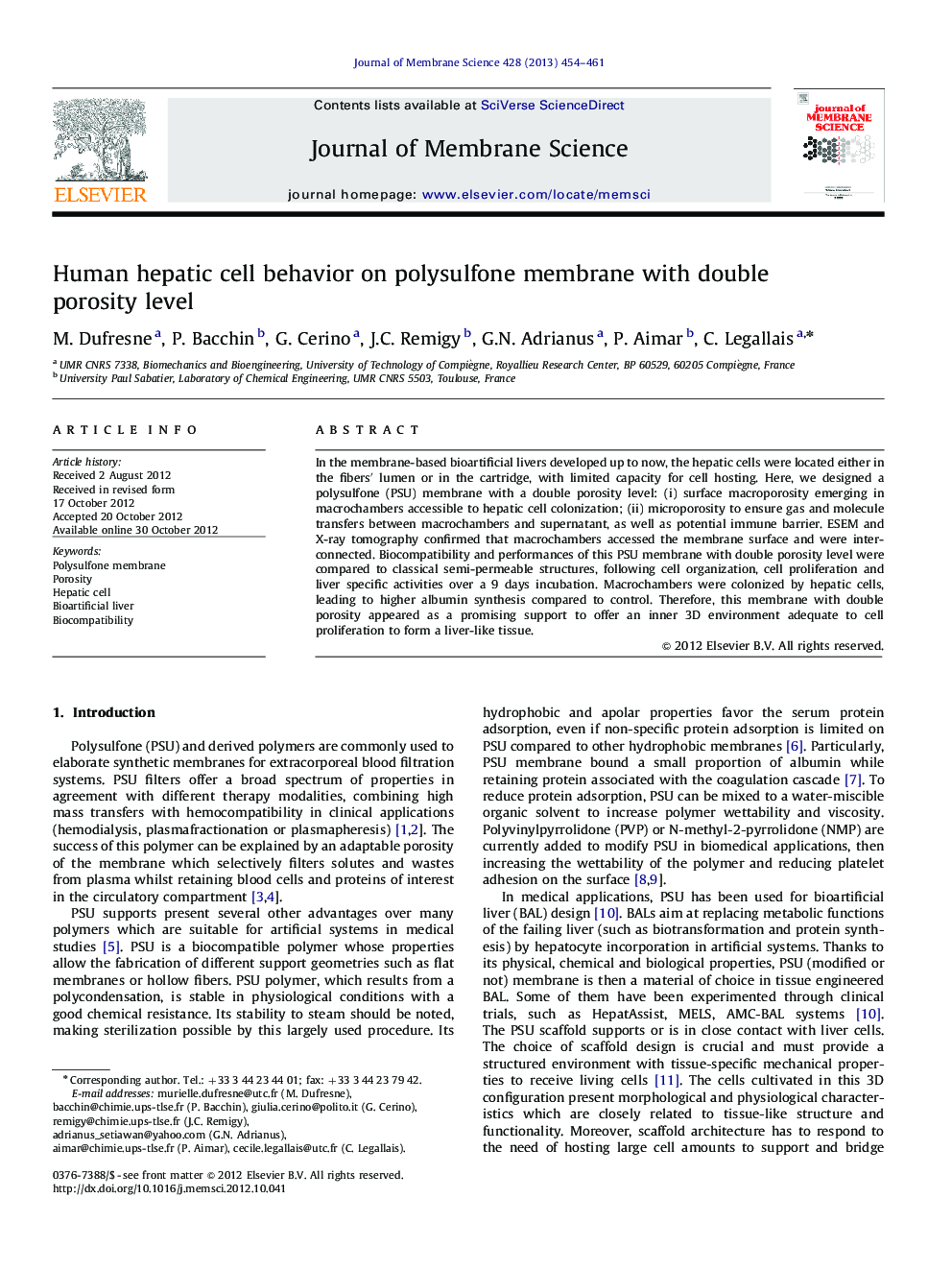| Article ID | Journal | Published Year | Pages | File Type |
|---|---|---|---|---|
| 634639 | Journal of Membrane Science | 2013 | 8 Pages |
In the membrane-based bioartificial livers developed up to now, the hepatic cells were located either in the fibers′ lumen or in the cartridge, with limited capacity for cell hosting. Here, we designed a polysulfone (PSU) membrane with a double porosity level: (i) surface macroporosity emerging in macrochambers accessible to hepatic cell colonization; (ii) microporosity to ensure gas and molecule transfers between macrochambers and supernatant, as well as potential immune barrier. ESEM and X-ray tomography confirmed that macrochambers accessed the membrane surface and were interconnected. Biocompatibility and performances of this PSU membrane with double porosity level were compared to classical semi-permeable structures, following cell organization, cell proliferation and liver specific activities over a 9 days incubation. Macrochambers were colonized by hepatic cells, leading to higher albumin synthesis compared to control. Therefore, this membrane with double porosity appeared as a promising support to offer an inner 3D environment adequate to cell proliferation to form a liver-like tissue.
► We designed a polysulfone membrane characterized by a double (micro/macro) porosity level. ► Tomo-X and ESEM analysis showed an original inner structure of the membrane. ► Hepatic cell behavior and functionality confirmed the membrane biocompatibility.
